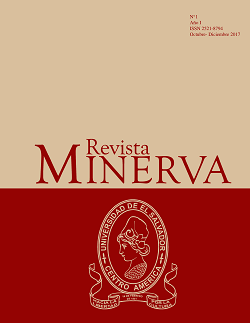Bio-economic evaluation of housing and seeding densities for the cultivation of freshwater edible snails (Pomacea flagellata Say, 1827)
DOI:
https://doi.org/10.5377/revminerva.v1i1.12550Keywords:
Pomacea flagellata Say, Freshwater snails, food safety, Mesogastropoda, AmpullaridaeAbstract
There is limited information about freshwater snails order Mesogastropoda and family Ampullaridae in El Salvador. The majority of people do not know this resource and its potential benefits. This research was developed at the fish farm of the School of Biology, University of El Salvador. The effect of housing anddensity in the production of Pomacea flagellata Say was evaluated during 180 days. The treatments were: asbestos tank with snail density of 1/3 liters of water, asbestos tank with snail density of 1/6 liters of water, plastic containers with snail density of 1/3 liters of water and plastic containers with snail density of 1/6 liters of water. Was used the statistical design completely randomized with five replicates per treatment. The variables evaluated were: weight, height, diameter, axis of the shell, yield, survival and weight compared with size. Was used an economical comparison using partial budget. There was no significant difference between weight, height, diameter and axis of the shell; while the yield of edible material was obtained statistical significance (p = 0.028). The highest value was 58.91% in plastic containers with 1 snail / 6 lt of water. The best survival results corresponded to plastic containers with 1/3 liters of water with 97.95%. In the comparison of weight and size was a positive relation between the variables (r²=0.96, 0.96 y 0.95 % for height, diameter and axis of the shell). In the partial budget showed in all treatments, net profits were negative due to low densities and high cost of the housing and transportation. The edible material analysis showed high protein and low fat in dry basis: 51.50 % y 5.60 %. The parasitological diagnosis reported Endolimax nana. The main conclusion was: the weight and size for the snails during the growth was statistically similar for all treatments.
277
Downloads
Published
How to Cite
Issue
Section
License

This work is licensed under a Creative Commons Attribution-NonCommercial-NoDerivatives 4.0 International License.

